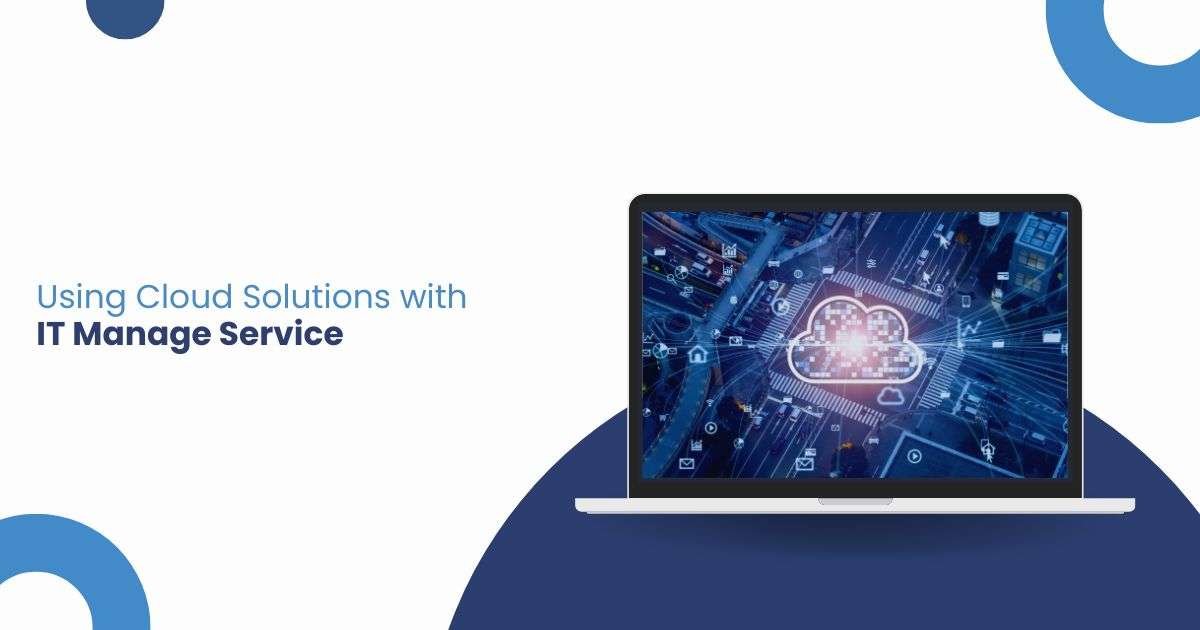Leveraging Cloud Solutions in IT Managed Services:
In today’s rapidly evolving digital landscape, businesses are constantly seeking innovative ways to streamline their operations, enhance efficiency, and stay ahead of the competition. One of the most transformative technologies driving this evolution is cloud computing. Cloud solutions have revolutionized the way businesses manage theirIT infrastructure, offering unprecedented flexibility, scalability, and cost-efficiency.
In this comprehensive guide, we’ll delve into the world of cloud solutions in IT managed services, exploring everything from the basics of cloud computing to the implementation best practices and real-world case studies. Whether you’re a seasoned IT professional looking to enhance your organization’s infrastructure or a business owner seeking to optimize your IT management strategy, this guide will provide you with the insights and knowledge you need to harness the power of cloud solutions effectively.
Understanding Cloud Computing Basics
Before diving into the specifics of cloud solutions in IT managed services, it’s essential to have a solid understanding of cloud computing fundamentals. Cloud computing, at its heart, is the practice of providing various forms of computer support (such as servers, storage, databases, networking, software, and more) through an online resource the cloud.Unlike traditional on-premises IT infrastructure, where resources are housed locally on physical servers, cloud computing enables users to access computing resources on-demand, from anywhere with an internet connection.
Benefits of Cloud Solutions for IT Management
The adoption of cloud solutions offers a plethora of benefits for IT management, ranging from cost savings and scalability to enhanced flexibility and agility. By migrating IT infrastructure and applications to the cloud, organizations can reduce capital expenditure on hardware and maintenance, while also benefiting from the ability to scale resources up or down dynamically based on demand. Additionally, cloud solutions enable IT teams to focus more on innovation and strategic initiatives, rather than mundane maintenance tasks, driving business growth and competitiveness.

Types of Cloud Solutions Offered in IT Managed Services
Cloud solutions come in various forms, each catering to different business needs and requirements. From public clouds offered by third-party providers like Amazon Web Services (AWS), Microsoft Azure, and Google Cloud Platform (GCP), to private clouds hosted on dedicated infrastructure, and hybrid clouds combining elements of both public and private clouds – there’s a solution for every organization. Moreover, specialized cloud services such as Software as a Service (SaaS), Infrastructure as a Service (IaaS), and Platform as a Service (PaaS) offer tailored solutions for specific use cases, providing unparalleled flexibility and customization options.
Key Components of a Cloud Solution in IT Management
Infrastructure:
The underlying hardware and software resources that power the cloud environment, including servers, storage, networking equipment, and virtualization technology.
Management Tools:
Tools and platforms designed to facilitate the provisioning, monitoring, and management of cloud resources, ensuring optimal performance and resource utilization.
Security Mechanisms:
Robust security measures and protocols to protect data, applications, and infrastructure from cyber threats and unauthorized access, safeguarding the integrity and confidentiality of sensitive information.
Scalability and Elasticity:
The ability of the cloud environment to scale resources up or down dynamically in response to changing workload demands, ensuring optimal performance and cost-efficiency.
Integration Capabilities:
Seamless integration with existing IT systems and applications, enabling interoperability and data sharing across the organization’s infrastructure.
Implementing Cloud Solutions: Best Practices and Considerations
When embarking on a cloud migration or implementation project, it’s essential to follow best practices and considerations to ensure a smooth and successful transition. Here are some key considerations to keep in mind:
Assessment and Planning:
Conduct a thorough assessment of your existing IT infrastructure, applications, and workloads to identify suitable candidates for migration to the cloud. Develop a comprehensive migration plan outlining timelines, resource requirements, and potential challenges.
Data Migration and Integration:
Develop a robust data migration strategy to ensure seamless transfer of data to the cloud while minimizing downtime and disruptions. Consideration should also be given to integrating cloud-based applications and services with existing on-premises systems to ensure interoperability and data consistency.
Security and Compliance:
Prioritize security and compliance considerations throughout the cloud implementation process, implementing robust security controls, encryption mechanisms, and access management policies to protect sensitive data and ensure regulatory compliance.
Performance Optimization:
Continuously monitor and optimize the performance of your cloud environment, leveraging automation tools and performance analytics to identify and address bottlenecks, optimize resource utilization, and enhance overall efficiency.
Training and Education:
Invest in training and education for IT staff to ensure they have the necessary skills and expertise to effectively manage and operate the cloud environment. Provide ongoing training and support to keep staff abreast of the latest cloud technologies and best practices.
By following these best practices and considerations, you can maximize the benefits of cloud solutions while minimizing risks and disruptions to your IT operations.
Security and Compliance in Cloud-Based IT Management Solutions
Security and compliance are paramount considerations in cloud-based IT management solutions, particularly given the increasing prevalence of cyber threats and regulatory requirements. Cloud security encompasses a range of measures and practices designed to protect data, applications, and infrastructure hosted in the cloud from unauthorized access, data breaches, and other security threats.
Scalability and Flexibility: Leveraging Cloud Solutions for Business Growth
One of the most significant advantages of cloud solutions is their inherent scalability and flexibility, enabling businesses to scale resources up or down dynamically in response to changing business needs and demands. Whether you’re experiencing rapid growth and need to expand your infrastructure quickly, or facing a downturn and need to scale back resources to reduce costs, cloud solutions offer unparalleled flexibility and agility to adapt to your evolving business requirements.
Cost Considerations and ROI Analysis for Cloud Solutions
While cloud solutions offer numerous benefits in terms of scalability, flexibility, and agility, it’s essential to consider the cost implications and conduct a thorough return on investment (ROI) analysis before embarking on a cloud migration or implementation project. While cloud solutions can lead to cost savings in terms of reduced capital expenditure on hardware and maintenance, as well as improved operational efficiency, there are also costs associated with cloud usage, such as subscription fees, data transfer costs, and ongoing management and support expenses. By carefully evaluating the total cost of ownership (TCO) and conducting a comprehensive ROI analysis, you can make informed decisions about the adoption of cloud solutions and ensure that your investment delivers tangible business value.




